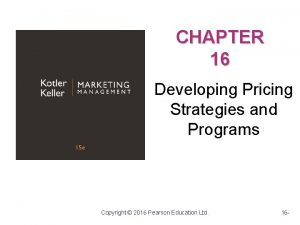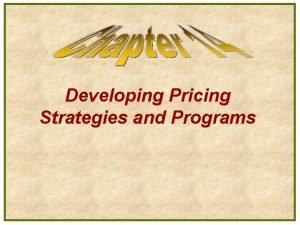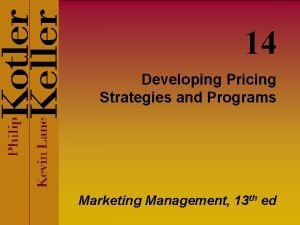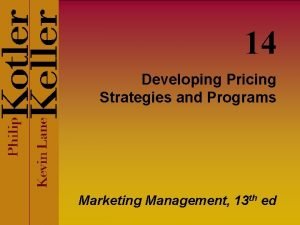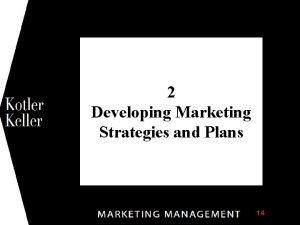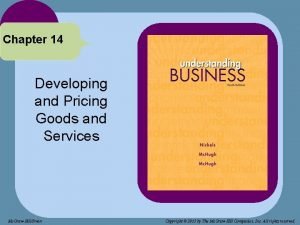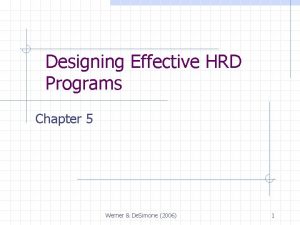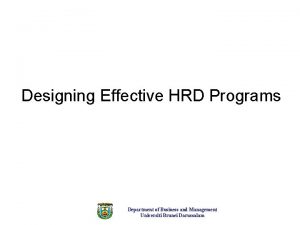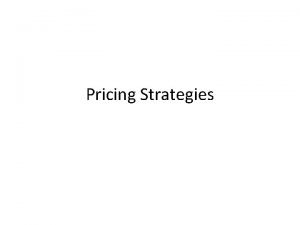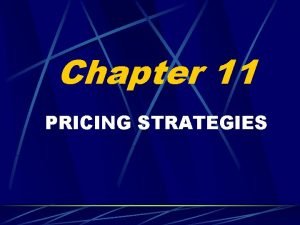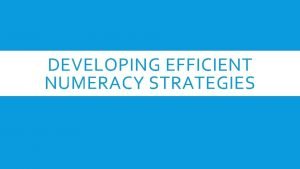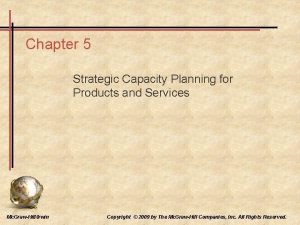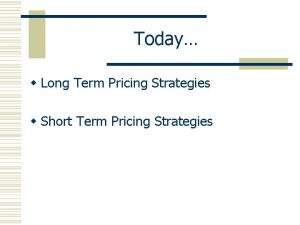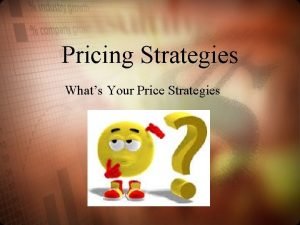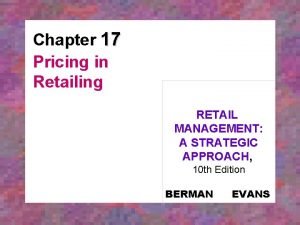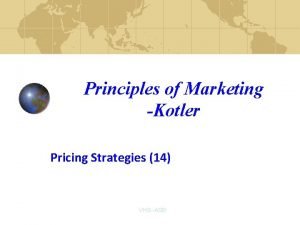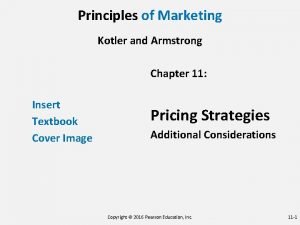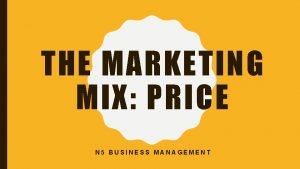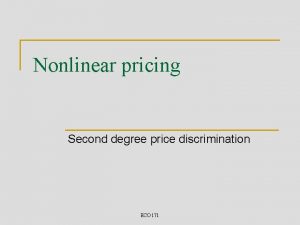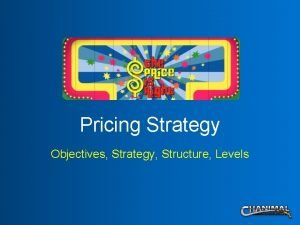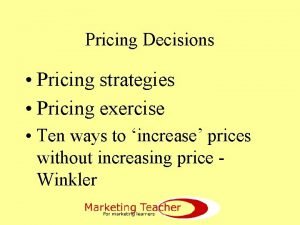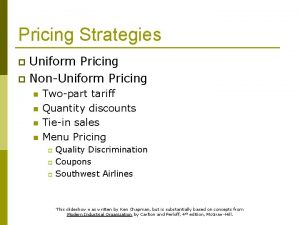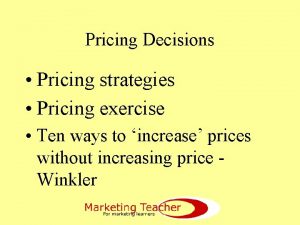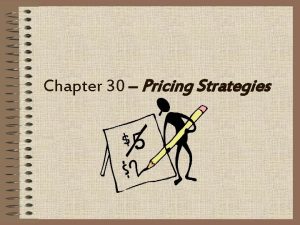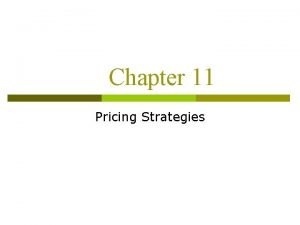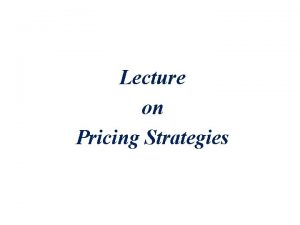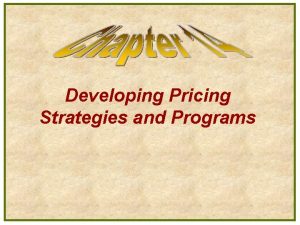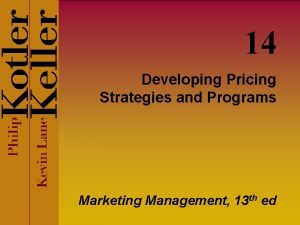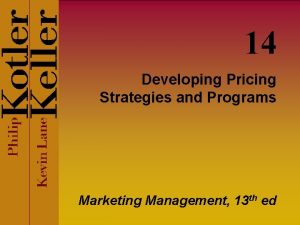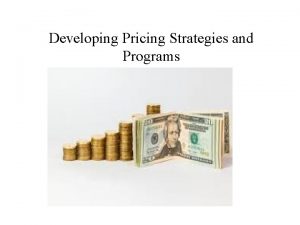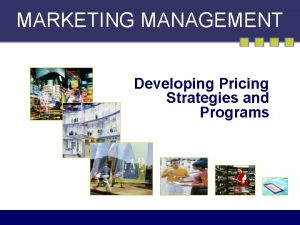CHAPTER 16 Developing Pricing Strategies and Programs Copyright


































- Slides: 34

CHAPTER 16 Developing Pricing Strategies and Programs Copyright © 2016 Pearson Education Ltd. 16 -

LEARNING OBJECTIVES 1. 2. 3. 4. 5. How do consumers process and evaluate prices? How should a company set prices initially for products or services? How should a company adapt prices to meet varying circumstances and opportunities? When and how should a company initiate a price change? How should a company respond to a competitor’s price change? Copyright © 2016 Pearson Education Ltd. 16 -2

UNDERSTANDING PRICING • Pricing in a digital world ü Get instant vendor price comparisons ü Check prices at the point of purchase ü Name your price and have it met ü Get products free ü Monitor customer behavior & tailor offers ü Give customers access to special prices ü Negotiate prices online or even in person Copyright © 2016 Pearson Education Ltd. 16 -3

UNDERSTANDING PRICING • A changing pricing environment – Sharing economy – Bartering – Renting Copyright © 2016 Pearson Education Ltd. 16 -4

UNDERSTANDING PRICING • How companies price – Small companies: boss – Large companies: division/product line managers • How companies should price – Understanding of consumer pricing psychology – a systematic approach to setting, adapting, and changing prices Copyright © 2016 Pearson Education Ltd. 16 -5

CONSUMER PSYCHOLOGY AND PRICING Reference prices Price-quality inferences Price endings Copyright © 2016 Pearson Education Ltd. 16 -6

REFERENCE PRICES Copyright © 2016 Pearson Education Ltd. 16 -7

SETTING THE PRICE Copyright © 2016 Pearson Education Ltd. 16 -8

STEP 1: SELECTING THE PRICING OBJECTIVE Survival Maximum current profit Maximum market share Other objectives Product-quality leadership Maximum market skimming Copyright © 2016 Pearson Education Ltd. 16 -9

STEP 2: DETERMINING DEMAND • Price sensitivity • Estimating demand curves – Surveys, price experiments, & statistical analysis • Price elasticity of demand Copyright © 2016 Pearson Education Ltd. 16 -10

FIGURE 16. 1 INELASTIC AND ELASTIC DEMAND Copyright © 2016 Pearson Education Ltd. 16 -11

PRICE SENSITIVITY Copyright © 2016 Pearson Education Ltd. 16 -12

STEP 3: ESTIMATING COSTS • Types of costs and levels of production – Fixed vs. variable costs – Total costs – Average cost Copyright © 2016 Pearson Education Ltd. 16 -13

STEP 3: ESTIMATING COSTS • Accumulated production – Experience/learning curve Copyright © 2016 Pearson Education Ltd. 16 -14

STEP 3: ESTIMATING COSTS • Target costing – Price less desired profit margin Copyright © 2016 Pearson Education Ltd. 16 -15

STEP 4: ANALYZING COMPETITORS’ PRICES • Firm must take competitors’ costs, prices, & reactions into account – Value-priced competitors Copyright © 2016 Pearson Education Ltd. 16 -16

STEP 5: SELECTING A PRICING METHOD • Figure 16. 4: three major considerations in price – Costs = price floor – Competitors’ prices = orienting point – Customers’ assessment of unique features = price ceiling Copyright © 2016 Pearson Education Ltd. 16 -17

STEP 5: SELECTING A PRICING METHOD • Markup pricing – Add a standard markup to the product’s cost Copyright © 2016 Pearson Education Ltd. 16 -18

STEP 5: SELECTING A PRICING METHOD • Target-return pricing – Price that yields its target rate of return on investment Copyright © 2016 Pearson Education Ltd. 16 -19

FIGURE 16. 5 BREAK-EVEN FOR TARGET-RETURN PRICE Copyright © 2016 Pearson Education Ltd. 16 -20

STEP 5: SELECTING A PRICING METHOD • Perceived-value pricing – Based on buyer’s image of product, channel deliverables, warranty quality, customer support, and softer attributes (e. g. , reputation) Copyright © 2016 Pearson Education Ltd. 16 -21

STEP 5: SELECTING A PRICING METHOD • Value pricing • EDLP – High-low pricing • Going-rate pricing Copyright © 2016 Pearson Education Ltd. 16 -22

STEP 5: SELECTING A PRICING METHOD • Auction-type pricing English (ascending) Dutch (descending) Sealed-bid Copyright © 2016 Pearson Education Ltd. 16 -23

STEP 6: SELECTING THE FINAL PRICE • Additional factors to select final price: ü Impact of other marketing activities ü Company pricing policies ü Gain-and-risk-sharing pricing ü Impact of price on other parties Copyright © 2016 Pearson Education Ltd. 16 -24

ADAPTING THE PRICE • Geographical pricing – Barter – Compensation deal – Buyback arrangement – Offset Copyright © 2016 Pearson Education Ltd. 16 -25

ADAPTING THE PRICE • Price discounts and allowances Copyright © 2016 Pearson Education Ltd. 16 -26

ADAPTING THE PRICE • Promotional pricing: • Loss-leader pricing • Special event pricing • Special customer pricing • Cash rebates • Low-interest financing • Longer payment terms • Warranties/service contracts • Psychological discounting Copyright © 2016 Pearson Education Ltd. 16 -27

ADAPTING THE PRICE • Price discrimination Customersegment pricing Product-form pricing Image pricing Time pricing Location pricing Channel pricing Copyright © 2016 Pearson Education Ltd. 16 -28

ADAPTING THE PRICE • Price discrimination – Yield pricing Copyright © 2016 Pearson Education Ltd. 16 -29

INITIATING AND RESPONDING TO PRICE CHANGES • Initiating price cuts – Excess plant capacity – Domination of market • Price-cutting traps – Price concessions – Low-quality – Fragile market share – Shallow pockets – Price war Copyright © 2016 Pearson Education Ltd. 16 -30

INITIATING AND RESPONDING TO PRICE CHANGES • Initiating price increases ü Delayed quotation pricing ü Escalator clauses ü Unbundling ü Reduction of discounts Copyright © 2016 Pearson Education Ltd. 16 -31

INITIATING PRICE INCREASES Copyright © 2016 Pearson Education Ltd. 16 -32

INITIATING AND RESPONDING TO PRICE CHANGES • Anticipating competitive responses • Responding to competitors’ price changes Copyright © 2016 Pearson Education Ltd. 16 -33

Copyright © 2016 Pearson Education Ltd. 16 -34
 Developing price strategies and programs
Developing price strategies and programs Segmented pricing
Segmented pricing Developing pricing strategies and programs
Developing pricing strategies and programs Developing pricing strategies and programs
Developing pricing strategies and programs Chapter 2 developing marketing strategies and plans ppt
Chapter 2 developing marketing strategies and plans ppt Ilumination
Ilumination Total product offer
Total product offer Designing effective hrd programs pdf
Designing effective hrd programs pdf Hrd design
Hrd design Chapter 26 pricing strategies answer key
Chapter 26 pricing strategies answer key Segmented pricing
Segmented pricing Chapter 26 pricing strategies
Chapter 26 pricing strategies Materi developing marketing strategies and plans
Materi developing marketing strategies and plans Overview of software engineering
Overview of software engineering Pricing and distribution
Pricing and distribution Global pricing objectives and strategies
Global pricing objectives and strategies Developing efficient numeracy strategies
Developing efficient numeracy strategies Developing efficient numeracy strategies
Developing efficient numeracy strategies Developing capacity strategies
Developing capacity strategies Wheel of loyalty
Wheel of loyalty Short term pricing strategies
Short term pricing strategies Captive-product pricing
Captive-product pricing Differential pricing strategy
Differential pricing strategy Pricing strategies in retail management
Pricing strategies in retail management Retail pricing management
Retail pricing management Kotler's pricing strategy
Kotler's pricing strategy Segmented pricing
Segmented pricing Higher business pricing strategies
Higher business pricing strategies Deposit pricing strategies
Deposit pricing strategies 4 p's of starbucks
4 p's of starbucks Entertainment pricing strategies
Entertainment pricing strategies 171
171 Physical rate fences
Physical rate fences Pricing strategies in marketing
Pricing strategies in marketing Pricing strategies definition
Pricing strategies definition
